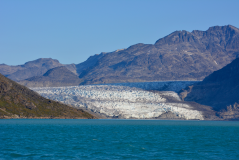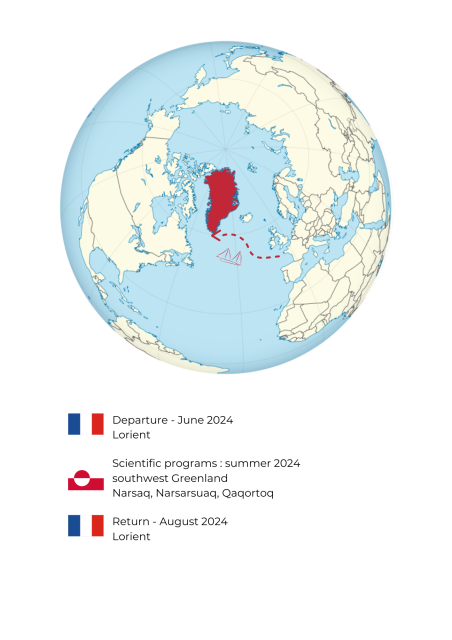
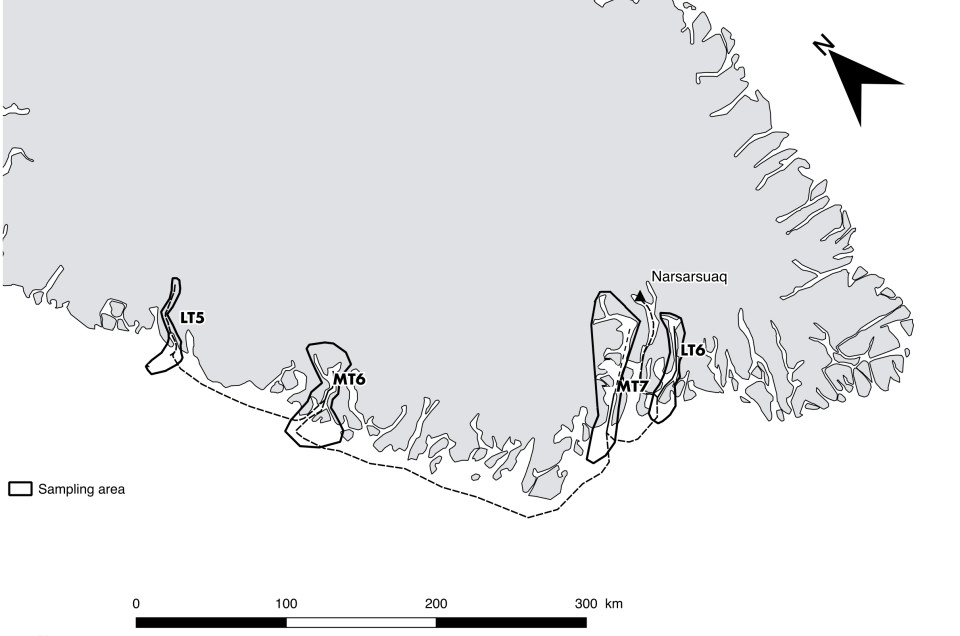
Focus on southwest Greenland: main sampling sites, FOREL - summer 2024
1. SWISS “GREENFJORD” PROGRAM
Objective: study ocean-ice-air interactions and biodiversity in the Nordre Sermilik Fjord, located north of Narsaq, Southwest Greenland.
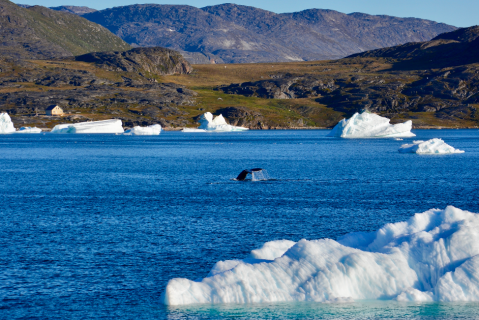

Scientists will study oceanographic variables such as temperature, salinity, chlorophyll, particulate and dissolved organic carbon/nitrogen, and trace gases (CO2, CH4, and N2O). Water samples will also be collected to determine the composition of phytoplankton. In order to fully understand ocean-ice-air interactions, atmospheric samples (aerosols) will be collected continuously. A group of experts specialized in the study of biodiversity also aims to study the fish community living in this fjord by carrying out environmental DNA (eDNA) sampling.
Website : www.greenfjord-project.ch
Missions
- collect numerous seawater samples using the rosette and collect physicochemical profiles using CTD. The FerryBox will be used continuously to collect the physicochemical properties of surface water (CO2, temperature, fluorescence).
- collect air samples continuously and occasionally to identify and measure the composition of particles in the air.
eDNA, what are we talking about?
All living beings, whatever their size or ecology, leave traces of DNA during their passage through the environment they frequent, via the loss of scales, hair and secretions. Environmental DNA (eDNA) is a non-invasive biodiversity monitoring technique for natural environments and species. This approach based on the collection of environmental samples (water, soil, faeces) makes it possible to detect different living beings that reside in or have passed through this natural environment. This approach is by definition non-invasive since individuals are not disturbed, only their traces are collected. Relatively recent, the technique reveals interesting results for monitoring rare or vulnerable species.
What are trace gases?
Next to 78% nitrogen dinitrogen, 21% oxygen, less than 1% argon and 0.04% carbon dioxide you will find gases in trace form. Emitted by both anthropogenic and natural sources, these gases are present at concentrations of the order of nanograms, or 0.000000001 grams, per cubic metre of atmosphere. Despite their very low concentration in the atmosphere, trace gases leave their mark on the atmospheric composition. Once emitted, these gases are not inert, but they are very reactive. They will react with each other in the atmosphere and lead to the formation of secondary species, such as ozone. These secondary aerosols or certain aerosols which have a strong impact on health and the climate. This is why it is essential to know how to identify and quantify them precisely in the atmosphere.
2. CANADIAN BENTHOS PROGRAM
Objective: understand the impact of the melting of glaciers and glacial tongues on the biodiversity associated with the seabed.
Marine-terminated* and terrestrial-terminated* glaciers have been shown to play different roles in ecosystem productivity in the Arctic. When glacial runoff enters the marine environment, it stimulates biological productivity at the base of food webs* by bringing up nutrient-rich water from the depths. Land-terminating glaciers are more turbid due to the contribution of rivers of sediments and minerals. These more turbid waters retain the sun's rays, essential for the development of phytoplankton.
Scientists from Université Laval aboard FOREL will therefore sample in two fjords influenced by marine-terminating glaciers and in two fjords influenced by terrestrial-terminating glaciers from Southwest Greenland.
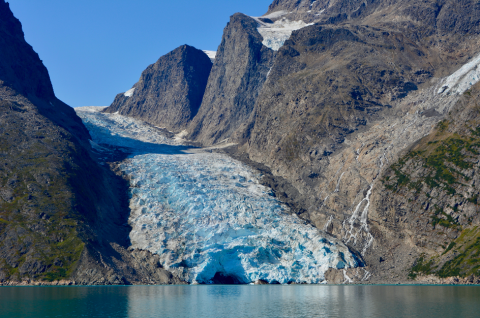

Missions
- The sediment will be collected either using a sediment grab. Benthic organisms (worms, molluscs, etc.) will be preserved on board FOREL either in formalin or frozen at -20°C. skip stations (replicated 3 times) in four different fjords will be sampled,representing a total of 48 skips.
- The fauna associated with the seabed will be collected using a trawl deployed from FOREL's rear platform.
- The CTD Rosette will also be deployed to collect water samples and measure the physico-chemistry of the water.
Sample analyses will be carried out in Québec (Canada) at Laval University, by Dr. Philippe Archambault’s research team.
For more information about Dr. Philippe Archambault’s research, visit: HERE

GLOSSARY
-
We speak of “benthos” when we refer to all the organisms associated with the seabed/sediments (above, above and inside). We are therefore talking about molluscs, crustaceans and worms that we can see with the naked eye.
-
Marine-terminated glaciers are defined as masses of ice that come into contact with the ocean (see diagram)
-
Land-terminating glaciers are defined as masses of ice that end on land (see diagram)
-
Trophic relationships refer to the food relationships between living things in the same ecosystem.

